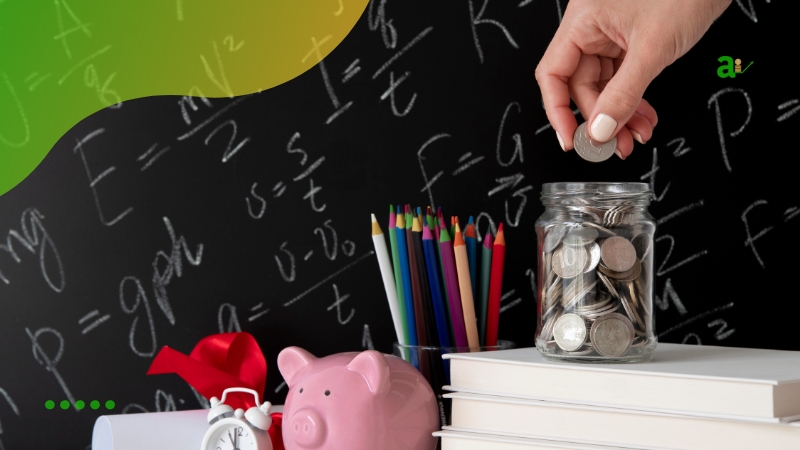Obtaining loan forgiveness for teachers can be a way to ease the burden of student debt, especially for those who dedicate their careers to teaching.
If you are a teacher and want to know how to qualify for loan forgiveness, this guide will help you understand the requirements and steps necessary to achieve this benefit.
In this article, we will explain the criteria required to be eligible for teacher loan forgiveness, including basic and additional requirements for teachers at different grade levels. Read on to learn how to make the most of teacher loan forgiveness opportunities.
Basic Requirements for Obtaining Loan Forgiveness

To be eligible for student loan forgiveness under the Teacher Loan Forgiveness Program, you must first meet a few basic requirements. They are:
- Obtain at least a bachelor’s degree: Have completed higher education with a degree relevant to the teaching profession.
- Receive full state certification as a teacher: Be certified by the state as a teacher;
- Not having certification or licensing waived on an emergency, temporary, or provisional basis: The certification must be formal and not provisional, ensuring that the teacher has met all the necessary qualification requirements required by the state.
These criteria are key to ensuring that the teacher has a solid qualification, allowing for eligibility for the student loan forgiveness program.
Extra criteria for new teachers
1. For elementary school teachers
For elementary school teachers who are new to the profession, in addition to the basic requirements mentioned, there are extra criteria to pass the program.
Above all, they need to demonstrate knowledge in reading, writing, mathematics and other areas of the basic curriculum of elementary school. This is done through a state test.
This test assesses a teacher’s skills in the essential areas of the elementary school curriculum, ensuring that they have the necessary preparation to teach these subjects competently.
2. For High School Teachers (Loan forgiveness for teachers)
For high school teachers who are new to the profession, the extra criteria involve demonstrating a high level of competence in the academic subjects they teach. In addition to the basic requirements, you must:
- Pass a state academic test: The test can be a certification or licensing exam required by the state, covering each of the subjects it teaches;
- Successfully complete an academic specialization or equivalent courses: Another way to demonstrate competence is through an academic specialization. For example, postgraduate course or a course equivalent to an undergraduate academic specialization.
These alternatives ensure that you have the proper preparation to teach the subjects that make up the high school curriculum with quality.
How much can be forgiven from debt?
The amount of teacher loan forgiveness you can receive often depends on the subject area you teach. Educators who hold qualifications in multiple high-need fields,such as mathematics, science, or special education, may be eligible for higher levels of loan forgiveness under federal programs.
In fact, the maximum loan forgiveness available is $17,500. This higher amount typically applies to teachers who specialize in subjects that are in critical shortage areas. For instance, full-time high school math or science teachers, as well as special education professionals who primarily work with students with disabilities, may qualify for this top-tier forgiveness level.
Conversely, teachers who do not fall within those high-need subject areas may still qualify for up to $5,000 in loan forgiveness. To be eligible for this amount, they must work full-time as classroom teachers at either the elementary or secondary school level. While the benefit may be lower, it still provides valuable financial relief for educators committed to serving in public schools over the long term.
Frequently Asked Questions (Loan forgiveness for teachers)

1. Which loans are eligible for forgiveness?
Federal loans like Stafford, Subsidized and Unsubsidized Direct. In addition to part of consolidated loans that repaid eligible Stafford loans.
2. How much can I buy per day? (Loan forgiveness for teachers)
Up to $17,500 for secondary school math or science teachers or special education teachers; up to $5,000 for other qualified teachers.
3. Do I need to teach at the same school during the five years?
No. You can teach in different low-income schools as long as each year of service is complete and consecutive.
5. Is my school qualified? (Loan forgiveness for teachers)
You can check your school’s eligibility in the Annual Directory of Low-Income Schools for Teacher Cancellation Benefits (TCLI).
6. What does highly qualified teacher mean?
It means having a bachelor’s degree, complete state certification, and demonstrating competence in the field of teaching.
7. Can I apply if my loan is in default? (Loan forgiveness for teachers)
Yes, as long as you have made satisfactory payment arrangements with the lender of the delinquent loan.
8. Can I apply if I have already paid off part of my loan?
No. The program is intended for loans still in balance.
9. How do I apply it?
After completing the five years of service, complete the Teacher Loan Forgiveness Application Form and submit it to your loan servicer.
10. Can I combine this program with Public Service Loan Forgiveness (PSLF)?
Not for the same period. You may qualify for both, but service time cannot be counted for both programs simultaneously.
Conclusion (Loan Forgiveness for Teachers)
Forgiveness of teacher loans has valuable financial relief for educators dedicated to their careers in the classroom.
By meeting the basic and additional requirements of the Teacher Loan Forgiveness Program, teachers can reduce their student debt.
To qualify, teachers must hold a bachelor’s degree, receive full state certification. Meet additional criteria based on the grade levels they teach.
Extra requirements may include passing state tests to demonstrate competence.
The amount forgiven may vary depending on the subject area taught, however, the ceiling is up to $17,500. Teachers in other fields may still be eligible for forgiveness, although the amount can be up to $5,000.
Undoubtedly, for teachers looking to ease the burden of student loans. Loan forgiveness programs are a great alternative for financial relief.
Another advantage of this forgiveness is that it is a chance to increase your credit score, especially if you are negative. However, this is not the only way to do this, if improving your score is important to you, know the best credit score improvement tips.





